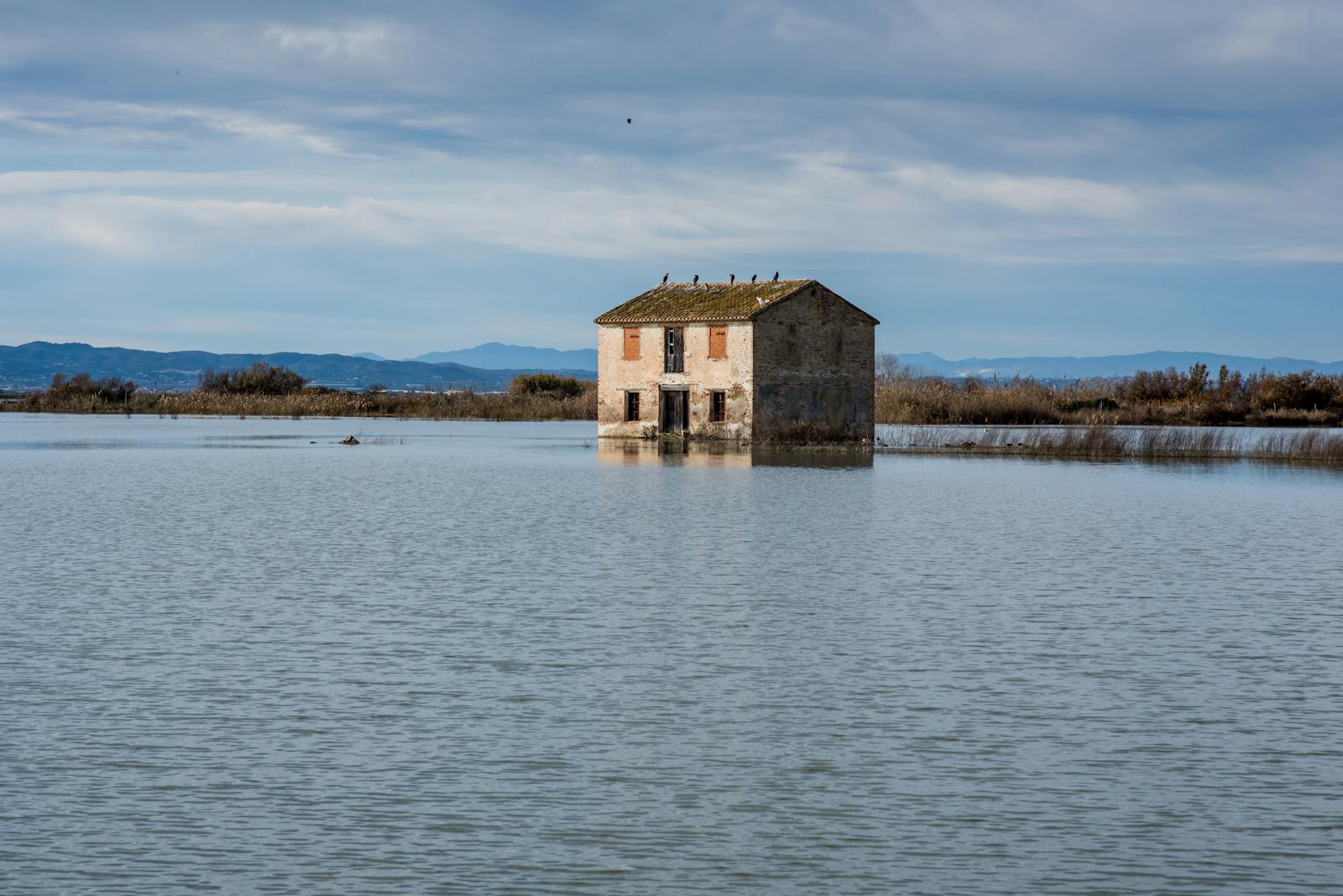Proper execution of the legislation is needed now more than ever as research shows eight million properties in England could be at risk of flooding by 2050.
The statistic highlighted above comes from a report from the Environment Agency which also revealed that 4.6 million homes and businesses are at risk of surface flooding – a 43% rise on its previous estimate.

In November the UK Green Building Council, in response to the announcement of DEFRA’s Flood Resilience Taskforce, said that the government must do more to mitigate the effects of climate change and flooding risks.
Schedule 3 of the Flood and Water Management Act
Following the historic case of flooding in 2007, the SuDS (Sustainable Drainage Systems) Manual was first published to provide guidance on planning, design, construction and maintenance of sustainable drainage systems. 2007 also saw the publication of the Pitt Review, which highlighted necessary lessons to be learnt and ultimately led to the framework for the Flood and Water Management Act 2010. The proposed changes in Schedule 3 of the Flood and Water Management Act 2010 included making sustainable drainage systems a legal requirement for most new developments and amending the right to connect to public sewers. However, in 2014 the then government decided not to implement Schedule 3 in England, in favour of strengthening planning policy.
Fastforward eight years: in 2022 the government sought to determine whether to implement Schedule 3 and the review for execution to the Flood and Water Management Act 2010 was published in January 2023 but no decision was taken.
The status quo
Labour is committed to reviewing how policy changes could slow the spread of impermeable surfaces, publishing this review by the end of 2024 and publishing standards for SuDS design, construction, operation, and maintenance. Although the 2024 deadline has been missed, I am still hopeful that the (relatively minor) legislative change will be made, and that the impact will have considerable benefits.
The change would mandate that new developments incorporate SuDS (nature-based approaches to reduce flooding, improve water quality and protect the environment) to manage runoff water. It is also likely that the government will establish a Sustainable Drainage Approving Body (SAB) as a local authority service which ensures new developments have drainage systems that are fit for purpose. SABs will be responsible for evaluating and approving drainage applications; adopting and maintaining surface water drainage systems; providing pre-application advice, and inspecting and enforcing.
The benefits of change
In the last year, we’ve seen how the recent Biodiversity Gain Requirements (Exemptions) Regulations 2024 has reshaped the planning system to ensure that biodiversity gain is mandatory in development across England and Wales.
Schedule 3 of the Flood and Water Management Act could introduce similar requirements relating to water catchment on site or in the vicinity of a new development, to ensure that the development both accommodates the existing baseline capacity and also provides a defined improvement facilitated by the development. For example, if the development provided a 10% gain in water catchment, this would not only mitigate any additional flooding brought about by development, but considerably reduce the local flood risk. This approach would enable developments to facilitate improvements to local flooding and water management either onsite or offsite in a similar way to biodiversity net gain (BNG). This would reduce local flooding issues at source but would also contribute to wider downstream improvements.
Such systems would align to the principles of BNG and could indeed contribute to BNG in a holistic and fully integrated way, creating high value flood management systems which, when integrated with BNG requirements, can be sustainably managed in perpetuity. Offsite requirements could also be used to implement much needed flood alleviation systems in areas most at risk or hardest hit by flooding. An example of this is already being used successfully at Hardcastle Crags near Hebden Bridge in Yorkshire. Here, upstream natural flood management is being implemented into along existing water courses and catchments through native woodland planting upstream and even incorporating art. The Art as Natural Flood Management (NFM) project enables renowned artists to create a series of artworks that respond to the climate emergency by delivering NFM measures. These artworks reduce flood risk, using NFM principles to help slow the flow of rainwater.
Although this is a private initiative funded by the National Trust, it could be implemented across England and Wales and part-funded by offsite contributions where necessary, making such solutions less reliant on private individuals, charities and DEFRA funding.
New housing developments are beginning to incorporate simplistic but effective SuDS principles. An interesting example of this can be seen at Oak Drive in Thirsk, North Yorkshire. Here a linear swale features through the spine road of the development, catching and holding rainwater as part of a site-wide approach.
A landscape-led approach
Lanpro has long advocated a landscape-led approach to development: ensuring that development works in harmony with the natural environment, retains a strong connection with nature and provides attractive open spaces which feature mature trees and hedgerows. To incorporate requirements brought about by changes to Section 3 into such an approach would have little impact on the viability or desirably of new housing developments: quite the opposite.
There is ample research and example demonstrating that mature natural environments, specifically water, benefit the value of property in addition to expediating the planning process and supporting health and wellbeing. The recent introduction of biodiversity net gain into all planning applications considerably raises the value of the natural landscape as a component of any development and the approach enables natural elements to be used strategically.
Other commercial benefits of the approach are that it can both facilitate cheaper construction practices on site and considerably reduce the likelihood of appeals. Creating SuDS, retaining or expanding a waterway at the outset of a construction programme can considerably reduce the cost of construction work.
As biodiversity net gain has demonstrated, while natural solutions can be found part-way through a planning application or even post-planning, the rule of thumb is that the earlier the landscape-led approach is deployed, the greater the savings and the better the scheme. There are examples of Lanpro’s landscape architects having achieved an extra 30 homes on a site of 1200 homes – but this was only achieved because our landscape architecture team was part of the project team from the early stages.
The impact of the delay on developers and local authorities
Although developers are free to take this initiative (and there are significant benefits in them doing so), the benefit of it being supported and defined by legislation is that a nation-wide, government-led approach can ensure careful site selection is undertaken as part of the due diligence approach and planning of development sites.
At a time when the government has committed to an ambitious housebuilding programme, the importance of mitigating the impact of development-related flooding has never been more important.
The impact of the delay in reviewing Schedule 3 is a cause for concern. Not only is there no clear guidance or a timeline for rollout of new requirements, but plans for a consultation did not occur as was initially anticipated. Furthermore, the change of government has left local authorities unsure as to what changes will occur.
Legislation that is deliverable, understands commercial, social and environmental balances and benefits would stimulate further growth, would align to current BNG requirements and alleviate flooding and water quality whilst at the same time delivering high quality and affordable new communities.
This article was written by Mark Topping, Director of Design at Lanpro.
Other features:
Westminster to ditch ‘For Sale’ signs, but is this the best decision?

















Leave a Reply